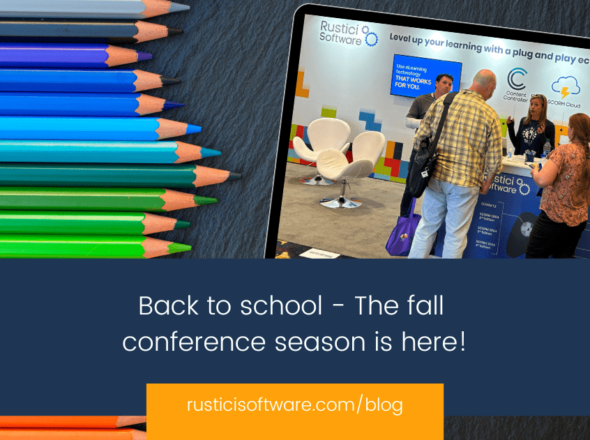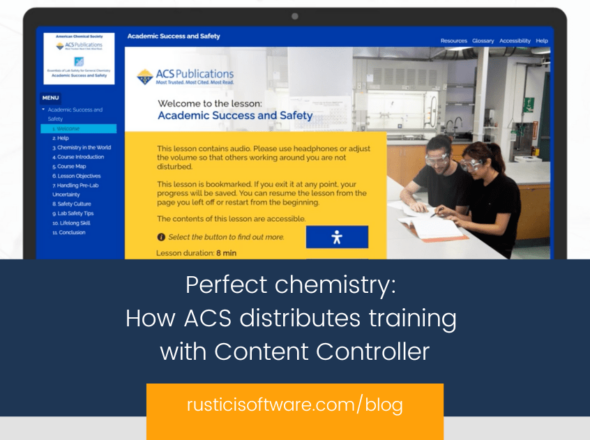If you’ve been familiar with Rustici Software for a long time, you’ll know we’ve helped people for a long time with SCORM and xAPI. Recently, we updated our products Content Controller and Rustici Dispatch to allow them to export content as LTI, which is a valuable feature for those in the academic space (years ago, we added this feature to SCORM Cloud Dispatch, and already Rustici Dispatch and Content Controller allowed you to import SCORM, xAPI, cmi5 or AICC content and export it as SCORM and AICC to other platforms).
Now that we’re providing you even more options for exporting content, we thought it was important to outline the differences between SCORM and LTI, so you can select the eLearning standard that is right for you.
To put it simply, the main difference between LTI and SCORM is that LTI is focused on connecting learning systems, whereas SCORM is focused on launching training content and tracking interactions. LTI tends to be used by higher education and academia, whereas SCORM is used primarily by government and corporations.
What is LTI?
LTI is focused on connecting learning systems in a standard way. It stands for Learning Tools Interoperability and it is a standard created by the IMS Global Learning Consortium. With LTI, a learner logs into an LMS (what is referred to as an “LTI tool consumer”) and typically selects a resource link to play a course. Then, they are seamlessly launched into a remote tool (an “LTI tool provider”) in an iframe or new browser.
To set this process up, the LTI tool provider provides a URL, key and secret, which is sent to the LMS administrator to upload into the LMS. LTI supports single-sign-on, and authenticates users via OAuth.
What’s neat about this experience is that LTI preserves the user experience of the LTI tool provider. This provides great opportunities for content creators, who can craft unique learning experiences within their own tools and easily share these learning experiences to other platforms using LTI.
LTI is highly used in academia and higher education, so if you’re creating content or platforms in that space, we would highly recommend you support it.
What is SCORM?
SCORM is focused on launching training content and tracking interactions. It specifies the communication method between eLearning platforms and content; if both support SCORM, everyone will play nicely together. SCORM stands for Sharable Content Object Reference Model and it was developed, and is now managed, by Advanced Distributed Learning Initiative (ADL) to support the Department of Defense.
There are technically five versions of SCORM: SCORM 1.1, SCORM 1.2, SCORM 2004 2nd Edition, SCORM 2004 3rd Edition and SCORM 2004 4th Edition. All of the different versions of SCORM govern the same two things: packaging content and exchanging data at Run-Time.
Packaging content determines how a piece of content, let’s say a course, should be delivered to an LMS or other eLearning platform, like an LXP. This file contains all the information needed by the LMS for it to import and launch (or play) the content without the learner doing a single thing.
Run-Time communication specifies how the content should “talk” to the LMS while a learner is going through the course. Run-Time outlines how the course does things like request a learner’s job title or tell the LMS that the learner scored 82% on a test.
From a reporting perspective, SCORM courses will typically provide completion status, pass/fail status, score and total time to the LMS. We refer to this sometimes as “the big four.”
SCORM vs. LTI
Here are some differences between SCORM and LTI at a high level:
- Playing content: LTI is a standard way of connecting learners within an LMS to eLearning content, which is launched in a different platform. SCORM courses are uploaded into and played within the LMS.
- Governance: LTI is created and maintained by IMS; SCORM by ADL.
- Usage: LTI tends to be used by folks in academia and higher education. SCORM tends to be used by corporate organizations and government agencies.
Now what?
If you’re a content creator, we have a few products that allow you to deliver SCORM content to LMSs that only support LTI. These products deliver the LTI score back to the LMS, while allowing you to still track and maintain learners’ SCORM data.
If you’re creating an authoring tool, Rustici Driver can help it produce SCORM conformant material.
If you’re creating an LMS, LXP or next-gen learning platform, check out Rustici Engine, which helps make your application SCORM conformant (plus, it also helps you support xAPI, cmi5 and AICC).
If you just want to learn more about SCORM, check out our website SCORM.com, which is a great technical resource.
If you have questions, we are here to help! Just get in touch, you can ask us anything.


